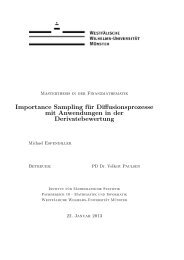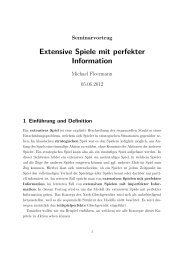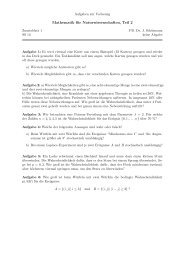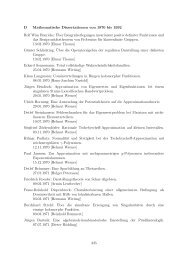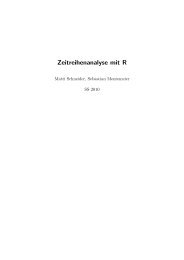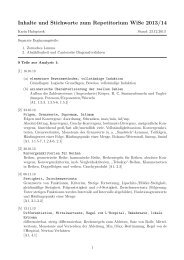Margulis Lemma
Margulis Lemma
Margulis Lemma
Create successful ePaper yourself
Turn your PDF publications into a flip-book with our unique Google optimized e-Paper software.
32 VITALI KAPOVITCH AND BURKHARD WILKING<br />
By Theorem 2.5, there exists h = h(n) such that H can be generated by some<br />
b 1 , . . . , b h ∈ H satisfying d(˜p, b i ˜p) ≤ 4ε 2 (n) for any i = 1, . . . h. We can obviously<br />
assume that the generating set {b 1 , . . . , b h } contains inverses of all its elements. We<br />
proceed in three substeps.<br />
Claim 1. There is a positive integer L(n, ε 1 (n)) such that for all ε 2 (n) < 1<br />
100L and<br />
any choice of g i ∈ {b 1 , . . . , b h }, i = 1, . . . , L we can find l, k ∈ {1, . . . , L} with l < k<br />
and g l · g l+1 · · · g k ∈ Γ ′ .<br />
We assume ε 2 (n) < 1<br />
100L<br />
and we will show that there is an a priori estimate for<br />
L. Notice that d(˜p, g 1 · · · g l ˜p) < 4ε 2 (n)l ≤ 1 25 holds for l = 1, . . . , L. Thus g 1 · · · g l<br />
maps the ball of radius B 2/3 (p) into the ball B 3/4 (p).<br />
We choose a maximal collection of points {a 1 , . . . , a m } in B 2/3 (p) with pairwise<br />
distances ≥ ε 1 (n)/4. It is immediate from Bishop–Gromov that m can be estimated<br />
just in terms of ε 1 and n.<br />
Assume we can choose g i ∈ {b 1 , . . . , b h }, i = 1, . . . , L, such that g l · · · g k ∉ Γ ′<br />
for all 1 ≤ l < k ≤ L. This implies that d(g l · · · g k a u , a u ) ≥ ε 1 (n)/4 for some<br />
u = u(l, k) ∈ {1, . . . , m}. Hence,<br />
d(g 1 · · · g k a u(l,k) , g 1 · · · g l a u(l,k) ) ≥ ε 1 (n)/4, for 1 < k < l < L.<br />
We consider the diagonal action of Γ on the m-fold product Ñ i<br />
m and the point<br />
a = (a 1 , . . . , a m ). We just showed d(g 1 · · · , g k a, g 1 · · · g l a) ≥ ε 1 (n)/4 for all 1 ≤<br />
k < l ≤ L. Thus there L points in the m-fold product B 3/4 (˜p) m which are ε 1 (n)/4<br />
separated. Now the Bishop–Gromov inequality provides an a priori bound for L.<br />
Claim 2. Choose L as in Claim 1 and assume ε 2 (n) ≤ 1<br />
w = b ν1 . . . b νl of length l ≤ L we have wΓ ′ w −1 ⊂ Γ.<br />
100L<br />
. Then for every word<br />
Let γ ′ ∈ π 1 (B 1 (p)) be an element that displaces every point in B 2/3 (˜p) by at most<br />
ε 1 (n). By the definition of Γ ′ it suffices to show that wγ ′ w −1 ∈ Γ. Let q ∈ B 1/2 (˜p).<br />
Since ε 2 (n) < 1<br />
100L , it follows that w−1 ˜p ∈ B 1/25 (˜p) and hence w −1 q ∈ B 2/3 (˜p).<br />
Therefore<br />
d(q, wγ ′ w −1 q) = d(w −1 q, γ ′ w −1 q) < ε 1 (n) for all q ∈ B 1/2 (˜p).<br />
This proves Claim 2. Step 2 now follows from<br />
Claim 3. Every element h ∈ H is of the form h = wγ with γ ∈ Γ and w = b ν1 · · · b νl<br />
with l ≤ L.<br />
We write h = w · γ, where w is a word of length l. We may assume l is chosen<br />
minimal. It suffices to prove that l ≤ L. Suppose l > L. Then we can apply<br />
Claim 1 to the tail of w and obtain w = w 1 γ ′ w 2 with γ ′ ∈ Γ ′ , w 2 a word of length<br />
< L and the word-length of w 1 · w 2 is smaller than the length of w.<br />
By Claim 2, w2 −1 γ′ w 2 ∈ Γ. Putting γ 2 = w2 −1 γ′ w 2 γ gives h = w 1 · w 2 γ 2 – a<br />
contradiction, as the length of w 1 w 2 is smaller.<br />
□<br />
Corollary 7.1. In each dimension n there exists ε > 0 such that the following<br />
holds for any complete n-manifold M and p ∈ M with Ric > −(n − 1) on B 1 (p).<br />
If the image of π 1 (B ε (p)) → π 1 (B 1 (p)) contains a nilpotent group of rank n, then<br />
M is homeomorphic to a compact infranilmanifold.






